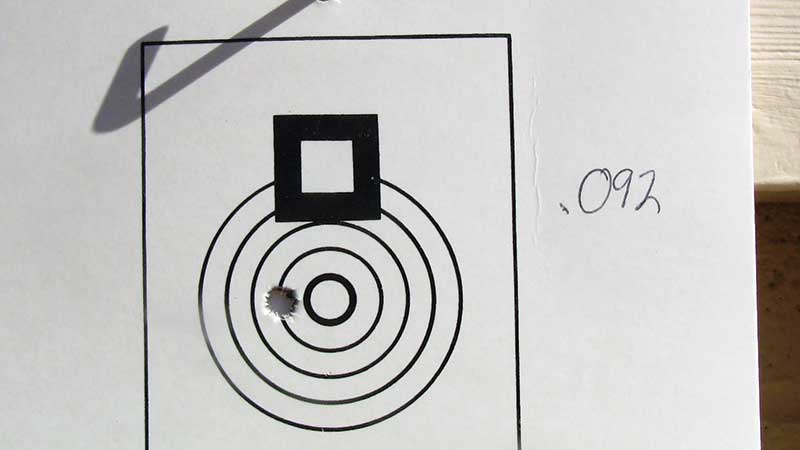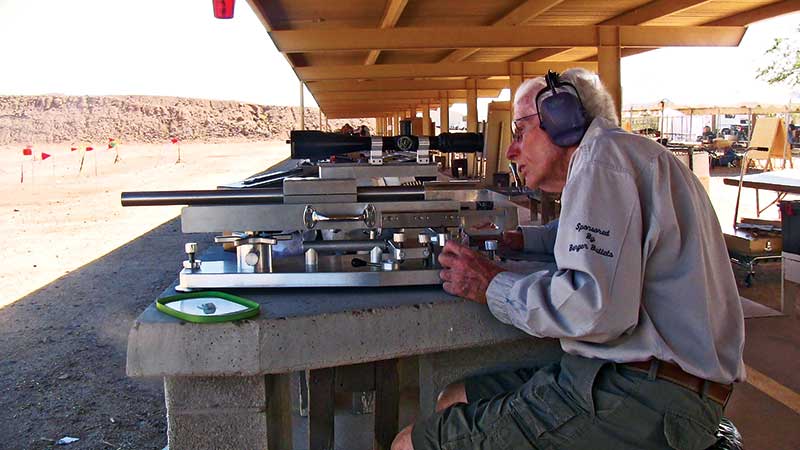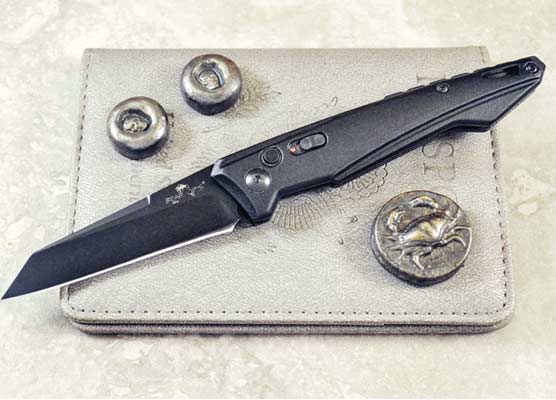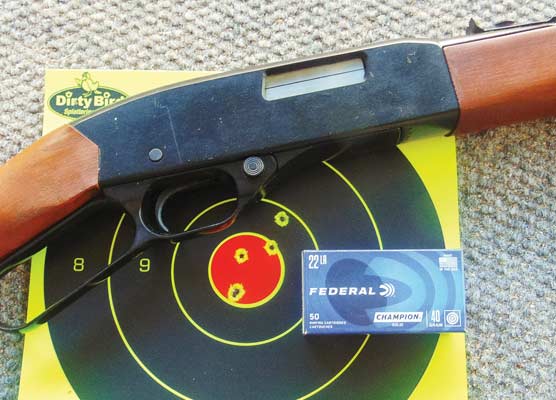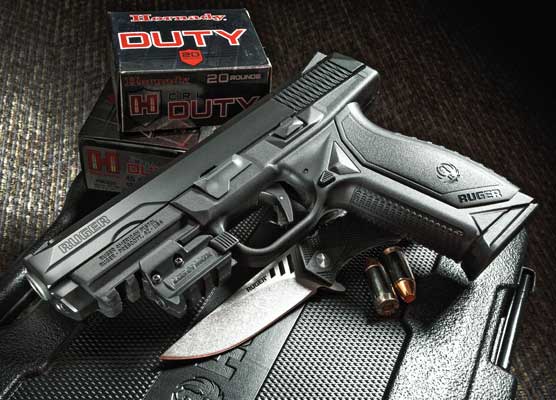Sweating the Details: Bench Rest Shooting
The Extreme Sport
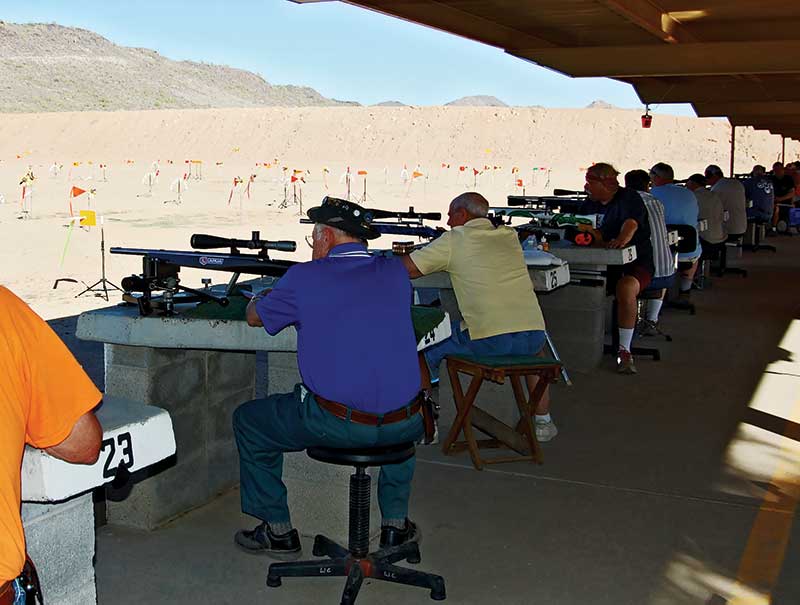
On the line and ready to shoot. There is so much equipment, wagons are used to bring it to the line.
After each relay, a competitor goes back to the bench and reloads for the next relay. Wind flags dot
the range from the 100-yard target to just in front of the shooting line. Reading the wind on every
section of the range is an art form itself.
There’s a distinct difference between knowing about a sport and knowing of a sport and therein lies the dilemma with bench-rest shooting. I’d heard of bench-rest shooting, but never really knew about the sport until attending the Bench Rest National Championships.
The roots of shooting competitions are primarily hunting or military based. Clay target got its start from bird hunting. Pistol and rifle competitions took their lead from the military. Bench-rest competition is neither. It’s laboratory based. It’s research and experimentation. It’s removing as much of the human element out of a single shot to achieve as much precision and accuracy as possible.
In all sports, the ultimate goal is perfection. Executing every aspect of the game perfectly, every time. In bench rest, the goal still applies, but there’s an added element: understanding how to approach perfection. The competitors in bench-rest shooting have taken perfection to a level so high, it’s practicably unobtainable. And that’s the appeal of the game.
A bench-rest competitor is an extremist. The type of person who has a love of the meticulous and the passion and perspective of a detailed, analytical mind. The type of mind found in mathematicians, engineers, machinists and inventors. A type of mindset lost on most people.
The current membership of the NBRSA (National Bench Rest Shooters Association) varies between 1,500 and 2,000 shooters and it’s been around those numbers for a while. The sport doesn’t see much growth. But for those who participate, it’s an obsession.
Bench-rest shooting is about the development and encouragement of extreme accuracy and precision in rifles, ammunition, equipment and shooting methods. This game is about judging your own skill as a shooter, understanding accuracy, manipulating the equipment, being proficient in deciphering weather conditions and bringing all that together to make the perfect shot. The level of precision and accuracy is taken to such an extreme and the amount of error so minuscule, it is the most difficult shooting sport to succeed at. There are no perfect scores.
Restrictions?
The game is unique because of its lack of restrictions. In most sports there are rules and regulations ranging from clothing to equipment. Not so in bench rest. There are some rules, but they’re minimal compared to other rifle sports and the rules in place are mostly concerned with weight and stock configurations.
There is only one caliber limitation and it’s applicable in only one category. There are no optic or barrel restrictions. The only constraint on triggers is they must be mechanically operated. Unlike every other shooting sport, there are no official classifications. Beginners shoot against seasoned veterans. There are no gender or age separations, no handicapping of skill levels. It’s an extremely even playing field.
The rules of competition are basic and simple. The shot doesn’t need to be in the center of the 10-ring target. But it does have to go through the same bullet hole over and over again. The official rule book of the NBRSA is largely dedicated to how to conduct a match correctly, the appropriate scoring of targets, assuring targets, ranges, scoring methods, records and match procedures are all uniform and comparable. In this sport, it’s not about the execution of the shot, it’s about the end result and the equipment it took to get there.
Of course, it is competition, so practice is a given. But while out practicing, experimentation with equipment is as important as how well the trigger is squeezed. Bench-rest competition is about getting the most precise small group sizes out of the rifle and the ammunition.
A match consists of four rifle categories: Unlimited, which is exactly what it says. Any rifle having a barrel 18 inches or more in length. That’s it, anything else is allowed. These rifles are on rails and can weigh 60 to 70 pounds or more. The Heavy Varmint category is any rifle having a manually operated trigger and weighing no more than 13-1/2 pounds including the sights. Light Varmint is any rifle not weighing more than 10-1/2 pounds including sights. The Sporter category is the same as Light Varmint but restricts ammunition to 6mm up to .308 Winchester.
This is an expensive sport. Fortunes have been spent on equipment and ammunition as everything is extremely personalized. There is no such thing as an “out of the box” bench-rest rifle. Stocks, barrels and actions are purchased separately and the rifles are built from the ground up by the competitors. It’s an eternal work in progress, as bench-rest shooters are never satisfied. They are in constant pursuit of the perfect load, the perfect barrel, the perfect stock configuration.
The barrel is the most critical. Predominantly Krieger or Bartlein, a good shooting barrel is what makes a good bench-rest shooter.
Unfortunately, it’s not something that comes guaranteed, which is why shooters buy four or five barrels at a time, have them chambered or do it themselves and see how well they shoot.
Actions are primarily Bat Machine actions with a few other names peppering the equipment list. Stocks, however seem to be more about personal preference and a bit more spread across the board. Names seen the most are Scoville, Scarborough, McMillan and Leonard. None of which are inexpensive. Scopes range in power and brand from Leupold to Nightforce to March.
So, before firing the first bullet, a few thousand dollars have already been spent on just building the gun and that’s before ammunition and accessories. No factory ammo is used. Bench-rest shooters have taken reloading to the extreme. Dominating the sport is Lapua .220 Russian cases necked up to 6mm PPC. The cartridge has nearly become the standard for bench rest. The most commonly used bullet is Berger, primers Federal Match and powder varies from Vihtavuori to Hodgdon. But everything is so customized, it’s impossible to give specifications.
Data keeping and tinkering with loads is a compulsion. Shooters have charts with years of data. The exact powder charge for the percentage of humidity in the air and the degree of cold or heat. If the weather changes a degree, the load changes by a 10th of a grain.
But, we can’t talk about bench-rest shooting without talking about the legendary Walt Berger. The founder of Berger Bullets, this man was instrumental in bringing bench-rest shooting to the level it’s at today. His energy, enthusiasm and deep love for the game spawned a company that embraced bench rest and he’s spent a lifetime building the sport. Now, in his late 80’s, he’s still competing today, encouraging the competitors and the pursuit of perfection.
At the 2016 Nationals, there were two possible World Records shot. In the Unlimited Eight 10-shot 100-yard category, Larry Boyers shot a 0.092-inch group. I say “possible” world record because it will be a few months before it’s recorded.
Bench rest is about the achievement of extreme precision and accuracy. How it’s achieved isn’t as important as the fact it is achieved. For the NBRSA and its members, the score has to be indisputable, so the process of recording a world record is extensive. To even be considered for a world record, the group has to be within 0.009-inch of the current world record. The target is seen, checked and double-checked by no less than seven people, starting with two referees and the Range Master who ensure all shots were taken and recorded on the backer.
The backer is a moving strip or card behind the target, so even though the bullets go through the same hole, with indecipherable differences per shot, the backer strip moves back and forth to show all shots were taken. After confirming all shots, the target is sent to the Regional Director for additional confirmation, then on to the Records Committee, where three different individuals from around the country review it. Each person takes precise measurements of the hole. When dealing with such exact thousandths, there’s no room for error.
Why is a world record so important for a group of less than 2,000 people? Bench-rest shooters and their tinkering are the unsung heroes of the shooting sports. Their technological advancements in rifles, shooting equipment, shooting methods and ammunition have revolutionized the shooting sports. They’ve changed the attitudes of gunmakers and ammunition manufacturers by establishing benchmarks of accuracy and demanding a certain level of performance. With no glory and fame, they continue to raise the bar for all of us.
If you want to experience true accuracy, true precision and the art of tinkering, then bench rest is your game. Some say the sport is boring, but I would argue that. It’s not as visually stimulating as action pistol or shotgun, but it has the excitement of intense competition and is much more self-satisfying. And when pursuing perfection, “boring” is the most exciting.
National Bench Rest Shooter’s Association,
P.O. Box 6770, Sheridan, WY 82801
www.nbrsa.org

